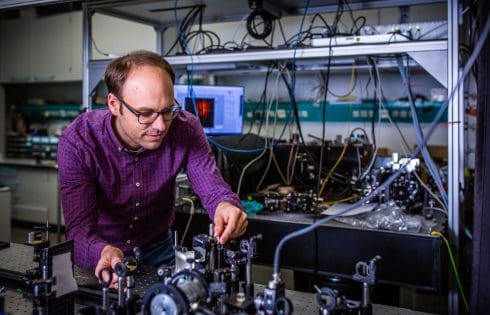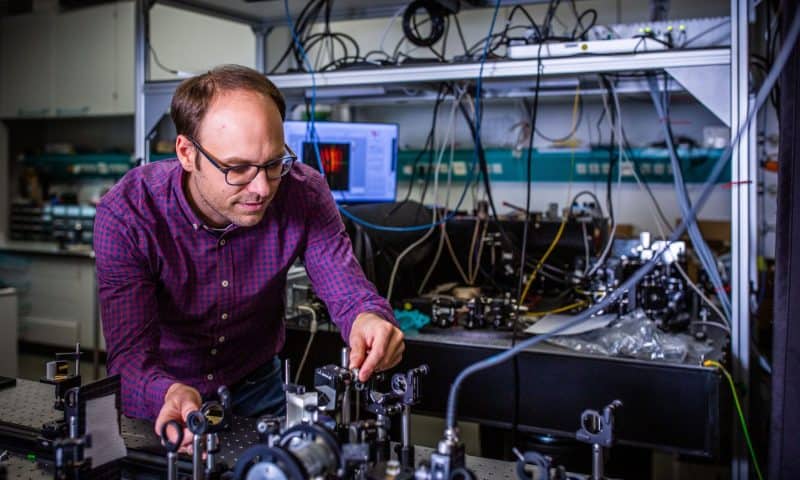
Researchers at the European Molecular Biology Laboratory (EMBL) say they have made an important leap forward with a novel methodology that adds an important microscopy capability to life scientists’ toolbox.
The advance represents a 1,000-fold improvement in speed and throughput in Brillouin microscopy and provides a way to view light-sensitive organisms more efficiently, according to Carlo Bevilacqua, an optical engineer in EMBL’s Prevedel Team and lead author of the study, “Full-field Brillouin microscopy based on an imaging Fourier-transform spectrometer” published in Nature Photonics.
“We were on a quest to speed up image acquisition,” said Bevilacqua. “Over the years, we have progressed from being able to see just a pixel at a time to a line of 100 pixels, to now a full plane that offers a view of approximately 10,000 pixels.”
The technology is based on a phenomenon first predicted in 1922 by French physicist Léon Brillouin. He showed that when light is shone on a material, it interacts with naturally occurring thermal vibrations within, exchanging energy and thereby slightly shifting the frequency (or color) of the light. Measuring the spectrum (colors) of the scattered light reveals information about a material’s physical characteristics.
In 2022, Bevilacqua and others in the Prevedel group were able to first expand the field of view to a line, and now with this latest development, to a full 2D field of view, which also helps speed up 3D imaging.
“Just as the development of light-sheet microscopy here at EMBL marked a revolution in light microscopy because it allowed for faster, high-resolution, and minimally phototoxic imaging of biological samples, so too does this advance in the area of mechanical or Brillouin imaging,” pointed out Robert Prevedel, PhD, group leader and senior author on the paper. “We hope this new technology—with minimal light intensity—opens one more ‘window’ for life scientists’ exploration.”

